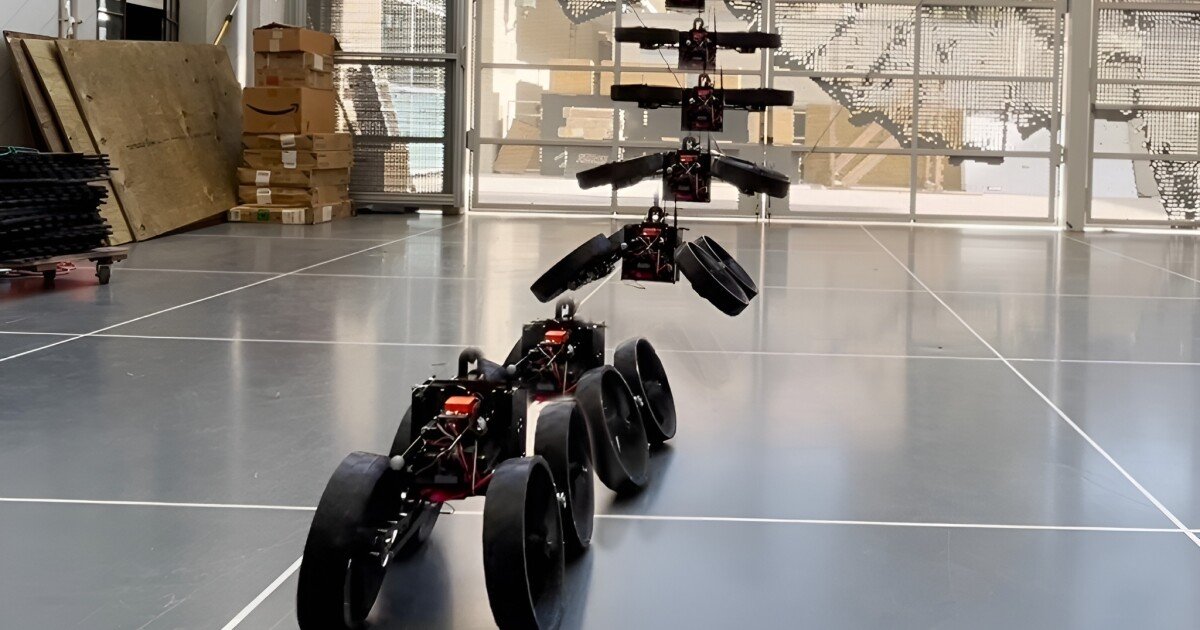Imagine a robot that can transform between Flying Drone and “Wheeled Rover” configurations. It could be potentially quite useful, but only if it works in real conditions. Atmo shoes were designed to do it by doing its transformation in the air.
Its name abbreviation for air transformation Morphobot, ATMO was created by a team of engineers at the California Technology Institute (Caltech). The device creates the technology used in the previous Caltech robot, M4 (multimodal Morfobot).
That The specific flow of robots as a regular quadcopter drone, when they transmit through the air, with its horizontally spreading propellers shrouded in the oven. As soon as he landed, these props folded in until they sat down at the right angle due to the rest of the robot body. Then they served as motorized wheels, with a coating forming rims with a rubber screw.

Caltech
Although it’s smart design, and more, as if he had one mistake. If there are rocks, grass or other protruding obstacles in landing, they can prevent helicopters from folding up to. The solution to this problem is to have robotic ground with its props/wheels, which are already all right down.
There comes atmo.
Although each propeller still has its own engine for flight, only one central engine is used to move one joint that folds these props (or out). However, the settings are not as easy as it sounds.

Ioannis Mandralis/Engineering Communications
As the propeller angle changes, and When the air pushed down the props, it begins to divert from the approach, the flight characteristics of the ATMO are changing accordingly. For this reason, scientists had to develop a special algorithm that compensates for these changing variables continuously by adding a jerk delivered delivered by each propeller.
As a result, the drone is able to perform a stable “dynamic landing” with its wheels/props already down. Then it can turn on the group through the group, with one belt drive on each side that spins up the wheels. The steering is managed through a difference that independently changes the speed of these units.

Ioannis Mandralis/Engineering Communications
“Here we present a dynamic system that has been studied earlier,” says Ioannis Mandralis, the main author of the study on the study. “Once the robot starts morphing, you get different dynamic links – different forces interact with one other. And the control system was to be repaired quickly.”
The post was recently published in the magazine Engineering. In the video below you can see ATMO in a powerful morphine event.
Atmo robot transforms in the air for the mobility of the Earth
Source: Caltech
(Tagstranslate) flying robot

